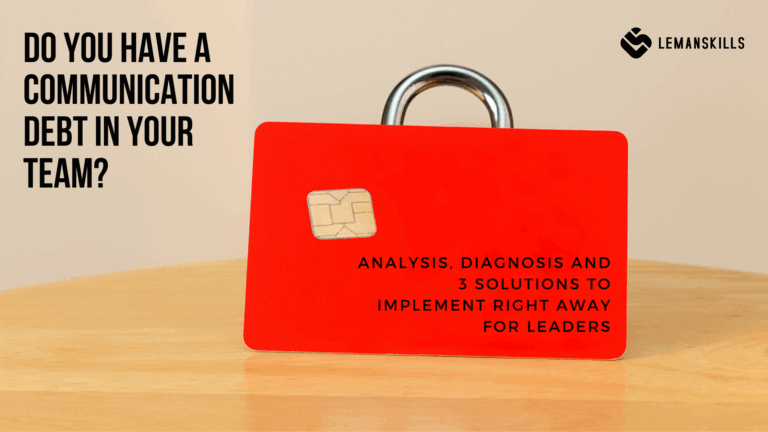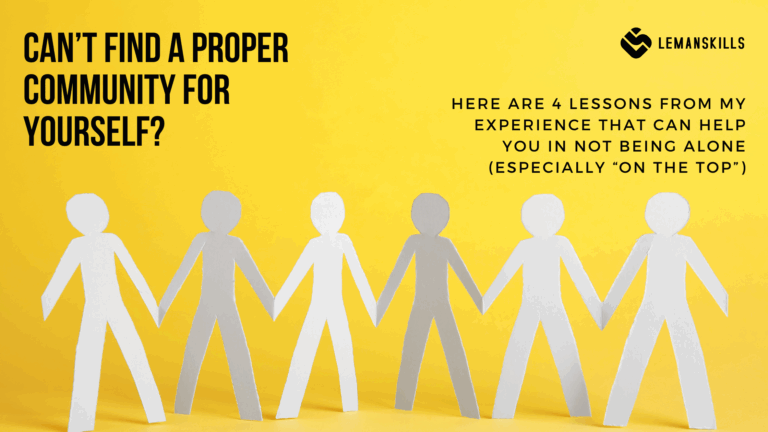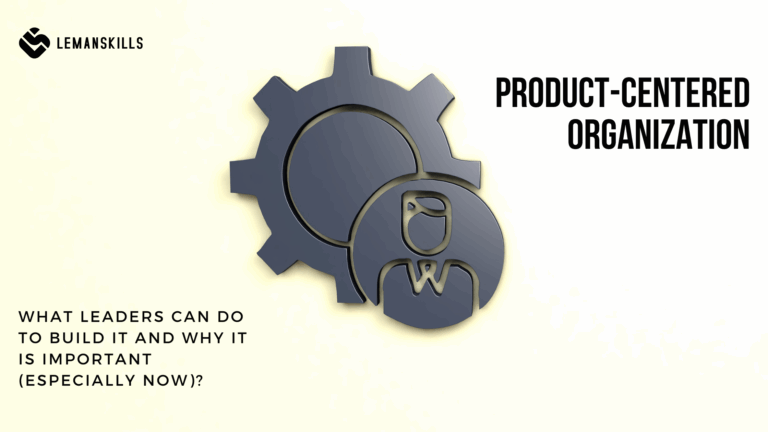Did you ever had a situation when you’ve delegated a task, asked for something, gave a feedback or recognition and your employee didn’t listen? You thought that you’ve been crystal clear about your intention or what’s there to be done, but it didn’t land? Or maybe a member of your team even nodded their head, but it wasn’t delivered as you’ve asked?
What comes to your head in the situations like that? What’s wrong with them? Or maybe it’s about me, I can’t even communicate with my own team?
Let’s unpack it today and take a closer look on the root cause and potential solutions.
Is it about them as employees…
What makes a leader efficient and reliable?
Once I was working with a leader in 1:1 mentoring process and he asked me this question: “Alex, what can I do so my team is more efficient? I do so many things, I give my people so much autonomy, they can do everything they want, but they don’t deliver things I ask them to. I would kill for so much freedom that I offer them.”
Oh, here we go.
The problem statement was “my people don’t listen to me, and they don’t deliver”.
And the first question that I asked was: “Why do you think it happens?”.
This leader looked at me like I was a crazy person, and he said: “It’s obvious: they’re disengaged and lazy”. The first thing that came to his brain.
“Is this a fact or your interpretation of the reality?”
He started to think. It took him a while, but afterwards he started to analyze. “Well… Sometimes when we are under a lot of time pressure, I’m more directive and distribute work among team members. We don’t have time then for discussions, it’s just a matter of delivering on a short deadline. I can tell that they work super efficiently then: like a pressure is a good thing for them”.
Oh, here we go x2.
In a lot of stories like that, the first thing of a leader is: it’s about them, not about me. And sometimes it really is about them. Lack of commitment, engagement, intrinsic motivation or skills: it can all happen. And we, as people, have different phases in our life: sometimes we are in an extremely good place, sometimes not so much. In a workplace, it’s our job as leaders to investigate what is the root cause of a certain behavior. Most of us are not psychologists or therapists, and it’s not our job to pretend that we are. But being curious, ask questions or make some statements that we’ll verify with an employee are tools to minimize the risk of the negative influence.
In the example above, the time pressure and short deadline wasn’t the “motivator”. It was a directive channel of communication that the leader has used to distribute the work. Evidently his team consists of more Promoters and/or Imaginers than other PCM types. And notice what he said: “I would kill for so much freedom that I offer them”. So, by giving them so much of an autonomy he covers his own frustrated need, not theirs. The intention is good, but he’s not addressing the right need.
… or maybe about me as a leader?
We all have our own stories, experiences from the past, beliefs and convictions from our early childhood that shaped what we think and feel about ourselves and the world that’s around us. That’s perfectly fine: that’s what making us human.
The question is: how much those things influence your leadership approach?
You say: people don’t listen, I say: “why is that happening?”. Most of the time people don’t listen because you don’t speak their language: you speak your own and you expect for them to understand you.
It’s like you speak English to a person who only speaks Spanish. The same part of the brain is responsible for using the foreign language as for using the language of different perceptions. If you talk data and I talk emotions, it’s almost impossible for us to get along. We just don’t understand each other, because we literally speak different languages.
The same thing is with the way we speak, so the communication channels. As in the example of a leader above: he gave people so much autonomy, probably without being more direct and concrete about the specifics that the team was lost in the fog. He didn’t want to be too harsh or pushy (in his head), so he hasn’t decided to use the directive channel that his team actually needed.
How we speak does matter: whether it’s about the words that we use or about the way we build the sentences (channels). People listen better when the communication is tailored to their needs, and there’s no one-size-fits-all.
Solutions?
- Know your people. If you are not aware what are the personality Bases of your team members, come back to the PCM materials, then make strong hypothesis of it and test them in reality. You can always use the Process Communication Model questionnaire and have a crystal-clear report, but you can also handle this without it. Get a little knowledge and use it, one step at the time. It doesn’t need to be perfect at the very beginning: the key thing is that you start building this muscle of recognizing the Base, so you can more automatically go straight into the better communication.
- Remember which words and channel use to which type. It’s crucial to tailor your communication. If you are going to speak the language of your people, they will listen and deliver work. Write down on one piece of paper all 6 PCM types with their main key words + preferred communication channel. Have it somewhere close to your laptop, so you can use it any time you’ll have a conversation. We all learn and that’s fine to have a little help at the beginning. What matters at the end of the day is that you know how to use it: paper or no paper.
- Observe how people react. Once you start using the proper channel and working tailored to your employees’ needs, observe their reactions and behavior. What changes? How their engagement looks like right now? And their efficiency and effectiveness: are they more focused on what really matters? Leader that tailors the communication most of the time has much better results that the one that uses one-size-fits-all. But you need to be observant: if the comms doesn’t land there’s maybe a need to reshape it somehow (maybe your hypothesis wasn’t 100% right). That’s fine: change the approach and see how it works.
There’s always space to grow and do things differently. Leader has a very difficult job to do, this role is more complex that we imagine. And we often get frustrated that people don’t listen to us, don’t deliver on time or in a quality that we would like them to. What I always do at first as a leader is to check my communication process, and you know what?
It appears that most of the time it’s about me, not about them. How things look like in my head versus how I expressed them verbally or in written (Teams / Slack / e-mail etc.). And often just a simple sentence or question transformation is enough.
Is it really so simple? Go and check by yourself!




